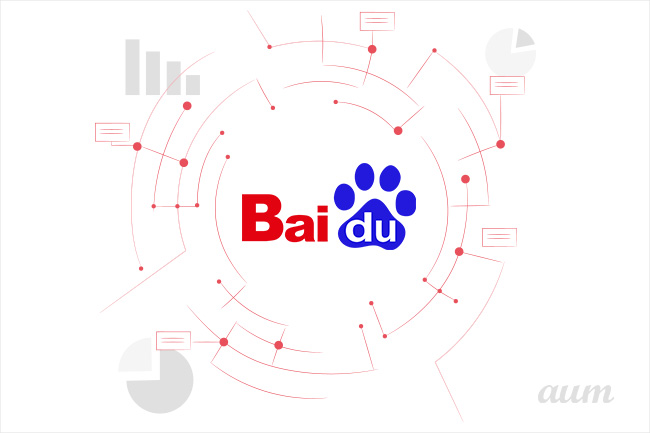The Generative AI is one of the most recent developments in the field of artificial intelligence that has been termed as a revolutionary force. It occupies the cutting-edge of innovation, removing new opportunities and changing the way technology practice is performed. In this direction, Google has also made a commendable feat in applying modern day AI through the introduction of the Search Generative Experience (SGE) under its search labs.
What is SGE?
Instead of a conventional search, SGE, or Search Generative Experience, is an innovative approach to performing online queries that shifts the paradigm in this area. It represents an example of a practical application of the complex Generative AI technology, which uses computational algorithms for optimizing search processes. In essence, SGE is an important revolution through which we find information on the internet. Generative AI in digital marketing is becoming all the more normal as users embrace the technology.
In comparison to conventional searching approaches, SGE is all as to make the search more ‘personal’ and intuitive. Reframe to think of it as a literary map in the digital world. Thus, by uncovering patterns and diagnosing user demands, SGE makes search outcomes custom-tailored to individual needs, thereby transforming the system into a more productive and user-oriented process. Essentially SGE is created to raise our internet inquiry level up to a higher form of more professional and friendly working environment.
How Does SGE Work?
SGE, Google’s Search Generative Experience, revolutionizes online searches with AI-powered overviews. It introduces a dynamic approach, offering users a snapshot that acts as a starting point for exploration, seamlessly connecting them to diverse content and perspectives.
Key Points:
- AI-Powered Snapshots: SGE provides quick overviews powered by AI, offering essential information on topics and encouraging users to explore further.
- Independent Verification: Users can verify information independently through links provided in the snapshot, ensuring transparency and reliability.
- Dynamic Follow-ups: SGE allows users to refine their queries or explore new directions without restating context, making the search experience more efficient and adaptable.
- Vertical Experiences: In shopping and local searches, SGE’s generative AI enhances exploration by uncovering key considerations, product information, and insights about local places.
- Search Ads Integration: Search ads continue to play a critical role, appearing in dedicated ad slots with transparency and distinguishable labeling.
- Enhanced Creativity: SGE goes beyond information retrieval, enhancing creativity and productivity in users’ journeys by introducing generative AI capabilities.
- Image Generation: Users can request and choose from up to four generated images based on their queries, adding an interactive and fun dimension to the search experience.
- User-Friendly Interface: Grounded in extensive user research, SGE’s UI is designed to make AI-powered snapshots easily accessible on both desktop and mobile, seamlessly integrating the power of generative AI into Google Search.
Key Features of Google’s SGE
Below are some of the promising factors that drive Google’s search generative experience and which make it a remarkable step in engine of web-based investigation.
1. Adaptive Learning:
SGE keeps on learning from your searching pattern and clicking behavior and after some time improves in comprehension over time.
2. Natural Language Processing:
SGE utilizes more advanced language models that allow the program to comprehend and answer complex questions in a more human, conversational way.
3. Multimodal Search:
Images and voice are not the only ones with which SGE operates, its logic is not limited to words only. You can therefore use images in your search, or say what you need, and this way, your searches become even more universal and complete.
Impact on Search Experiences
SGE is poised to redefine the search landscape in a few ways:
- Personalization: Users will get more targeted and precise results in search because of the machine learning process that takes into account their preferences.
- Enhanced User Engagement: The adaptive learning of the which the SGE encourages the users by applying to the changes of the individual searching habits.
- SEO Dynamics: The effect on SEO tactics will be quite prominent, leaving no choice but to adjust to such transforming algorithms and ranking agents in SGE.
How to Get Started with Google’s Search Generative Experience
Uncover the effortless transition into the digital future embodied within the Google Search Generative Experience by following these simple steps:
- Update Your Browser: Ensure that your browser is updated to benefit from the enhanced features of Google’s Search Generative Experience.
- Activate SGE: Locate the SGE toggle among the options within your search settings and activate the feature to enter this advanced search mode.
- Explore Multimodal Search: Play around with the voice and image inputs to realize the full range of possibilities that SGE offers beyond the mere text-based search.
Common Misconceptions about SGE
Despite its advancements, there are some misconceptions about SGE:
- Privacy Concerns: A possible concern in some people would be SGE interpreting the user search pattern and infringing on user privacy. But Google has resorted to effective privacy control actions to mitigate these issues.
- Overdependence: SGE may also lead to the fear of over-reliance where there is limited interaction with other authentic sources of information. But it is crucial to find a compromise and investigate different aspects for a more comprehensive understanding.
Limitations of SGE
Google’s Search Generative Experience (SGE) is a powerful tool, but understanding its limitations is key. Here are key points to grasp how SGE functions and the hurdles it faces.
- Learning from Data: SGE’s capabilities hinge on its training data, sometimes leading to biases in search results. Despite efforts to curb bias, it’s an ongoing challenge, reflecting current search result issues.
- Complex Queries: While effective for personalized results, SGE can struggle with intricate queries. Adjustments may be needed to enhance accuracy over time.
- Misinterpretations: SGE may occasionally misinterpret language during corroboration, but continual improvements through updates aim to refine this aspect.
- Hallucination: Like other language models, SGE may present inaccurate facts. Ongoing enhancements aim to minimize these instances and improve accuracy.
- Biases and Nuances: Despite efforts to prevent bias, some nuances might seep through, reflecting existing challenges in today’s search results.
- Opinionated Content: Designed for a neutral tone, SGE may occasionally sound opinionated, reflecting opinions found on the web. Ongoing work aims to maintain a neutral stance.
- Integration Challenges: Being part of the Search results page, SGE may sometimes contrast with other information, creating challenges in presenting a cohesive perspective. Efforts continue to streamline integration and presentation.
Ending Notes
The introduction of Generative AI in Search, exemplified by the Search Generative Experience (SGE) of Google, is a seismic change in the way we communicate with the online universe. Accepting this transformative technology ushers into a new age of internet exploration. This evolution should be fully taken advantage of and being informed, adjusting to changes, and exploring the wide range of opportunities that SGE creates will be essential. In the role of users, we are at the verge of an accelerated digital environment where the acceptance of these changes leads to a more specific and personalized search online.
If you are looking for the best digital agency to take you on the first step of you AI journey, look no further. Contact us today.





Tell us your thoughts in the comments